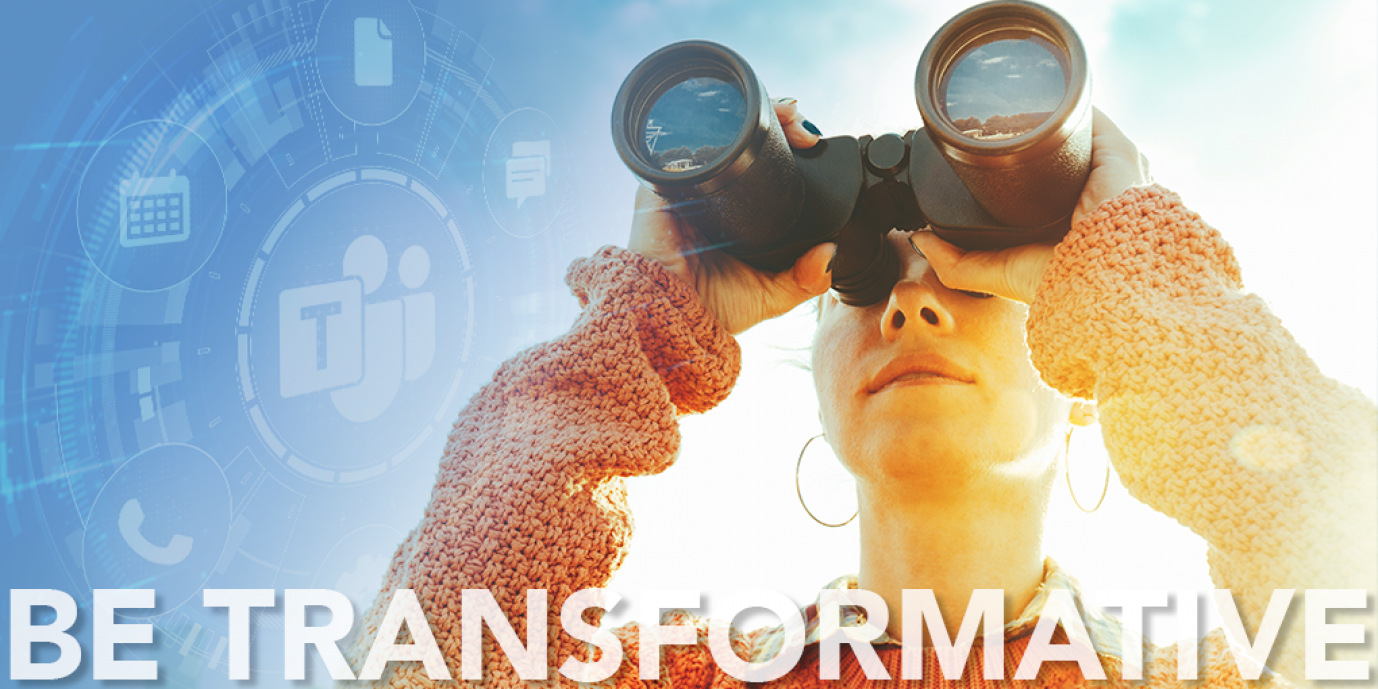Search
Contact Us
Transform the Contact Center with Microsoft Teams (blog series)
Register for our Webinar with Robin Gareiss, President and Founder of Nemertes Research
Blog #1 Enhancing the Customer Experience
With the ever-accelerating global adoption of Microsoft Teams as the collaboration platform of choice for more than 90% of the Fortune 500, and with over 75 Million daily active users, Teams is progressively displacing collaboration tools provided by most PBX and UC vendors.
This new reality presents the contact center industry with an excellent opportunity to integrate with Teams and provide seamless company-wide collaboration capabilities across their customer’s organizations. Quickly. Efficiently. Effectively.
The Key to Adoption and Success – Enhance Existing Workflows, Don’t Change Them
As we know, Teams does not offer a customer experience/engagement solution per se. Teams delivers what Microsoft does best, it facilitates and streamlines internal communications to enhance interdepartmental collaboration. Through the seamless integration of an omni-channel contact center with an advanced collaboration solution, organizations can now deliver even better levels of customer engagement and more powerful experiences to all.
Collaboration Improvements Drive Customer Engagement and Satisfaction
With more extensive collaboration capabilities, organizations will be able to increase First Call Resolution (FCR) percentages due to better insight into the content and progress of the call, improved access to required subject matter experts and online/offline documentation, which can then be quickly provided to the customer, in whatever format they prefer.
Simultaneously, improving collaboration will also decrease the Average Hold Times (AHT) while increasing customer-servicing capabilities, by complementing agents with “always-on” self-service capabilities that increase customer autonomy and satisfaction. As an added benefit, studies have found that this approach also reduces lost or abandoned calls, increasing the number of calls handled satisfactorily.
Microsoft Teams Collaboration Still Needs More Tools…Close those Gaps
Yet, even after having fully integrated Teams with an advanced omni-channel Contact Center solution, there are significant opportunities to further enhance a contact center’s ability to engage with customers. Especially when exceptional situations or needs arise.
Help Customers Help Themselves with Self-Service
Consistent Messaging
A cornerstone for positive customer engagement is consistently greeting the customer with warmth, clarity and professionalism, which hopefully leads to gaining their business. Proper greetings, using an appropriate corporate ‘voice’ while directing them to the right department, people or resources, will drive significantly better customer perception of the organization. It’s the best way to create a positive first impression.
IVR / Mobile IVR / Chatbots / CRM integrations
Contact Centers need the ability to provide customers with what they are looking for as quickly and precisely as possible. This has become one of the most important requirements as identified by most inbound callers (85% preference, per Gartner). Properly setting up an Interactive Voice Response (IVR) system – one that can be intuitively navigated and is accessible from both mobile and standard phones – will help reduce time otherwise spent waiting for live agent help. Properly configured, IVRs have been shown to reduce call abandon rates by upwards of 50%.
ChatBots (a.k.a. Virtual Assistants) complement the IVR and have become a powerful self-service tool as well. By automating customer engagement from the first point of contact, and by capturing generic information from an incoming call, SMS, email, fax or even a video message, chatbots can present the right options to the customer, in real-time, accelerating the resolution of their issue. Simultaneously it can gather and aggregate all appropriate information from the customer relationship management (CRM) solution to ensure that all required information is ready for the call to be transferred to a live agent if necessary. Alternatively, as the call progresses, chatbots can also provide automated updates to the customer’s file based on the self-service choices made.
Knowledge Bases
With customer calls, there are usually two primary reasons for the call. An inquiry (speak to someone, place an order), or for an issue or complaint. For issues, people have become comfortable dealing with automated online support as their first point of contact…and in fact, they prefer it. When properly set up and managed, a complete and comprehensive Knowledge Base can drastically improve overall service levels. Studies have found that 70% prefer the use of online support resources as their first point of contact, and its use can deflect upwards of 60% of all inquiries due to the quicker experience when using it.
By integrating the Contact Center and the most important Self-Service applications with Teams, organizations can significantly improve the speed and manner they engage with their customers while also improving the overall experience – by delivering what the customer needs or wants with industry-leading efficiency.

Watch for our next blog in this series, coming in two weeks:
Microsoft Teams Drives Agent Productivity Enhancements
Register Now Learn more from Robin Gareiss, President and Founder of Nemertes Research about how Microsoft Teams and the Contact Center can benefit your organization in our upcoming webinar:
Published In
Enghouse Interactive Educates digital transformation Webinar Outbound Dialer customer support social media webchat CCaaS Unified Communications operator console call handling quality management compliance Virtualization Integration & Optimization Cloud-Based Contact Center attendant console Contact Center Solutions MediaVoice Microsoft IVR/Self-Service call recording News workforce management zz-General voice of the customer customer service speech analytics contact center optimization quality monitoring Contact Center Customer Experience Omni-Channel VideoThank you!
You have successfully subscribed to our newsletter.
Sign up here to watch your selected video as well as gain access to the other videos listed here
Sign up here to watch your selected video
Sign up here to watch the videos as well access to more Tips 'N' Tricks videos
Get your free download


